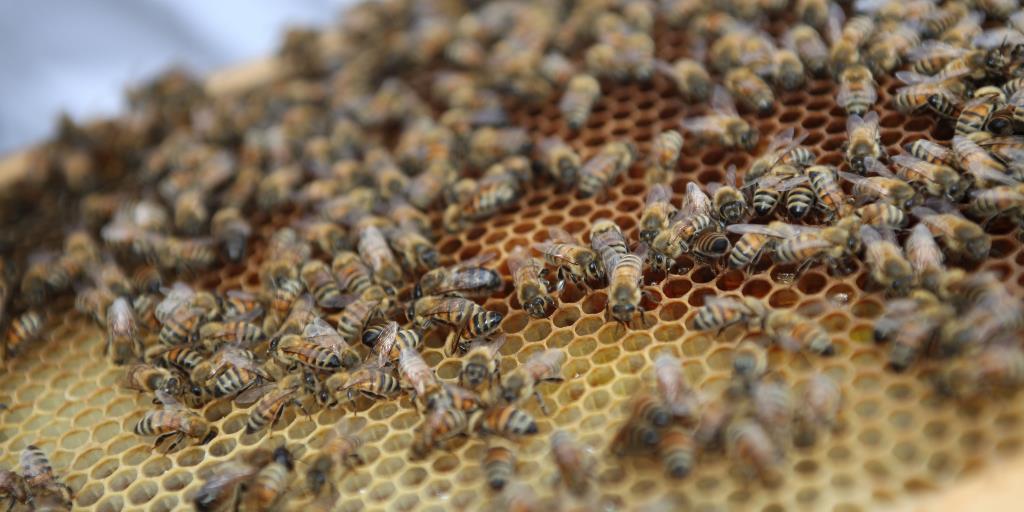Our bee keepers visited recently to care for our local buzzing chums.
Bee news

Brett, the bee whisperer
Our beekeeper Brett popped by to check in on our striped mascots. First things first, a bit of a checkup - the hives were treated for varroa mite – a parasite that’s particularly fond of honey bees. He also made sure that they had plenty to eat, (namely a block of bakers fondant feed to tide them for the early spring) in case they run out of honey.
"Two of the hives are thriving and in great shape, with a significant cluster of bees in the hive, doing a good job of keeping themselves warm. The third hive has fewer bees and it’s possible that there aren’t enough bees there to maintain sufficient warmth. (This was the hive that had a failed queen earlier in the year and it looks like the new queen just didn’t have enough time to rear sufficient newbees before she stopped laying.) We’re keeping our fingers crossed they make it through the winter as there isn’t really anything else we can do to help them," Brett says.
Long live queen bee
Our bee keepers will check in sometime in February or March, depending on when it starts to get warm enough to open them up without chilling the new brood. The queen should start laying eggs fairly soon and these new bees will start to hatch in February, ready to take over from the over-wintered bees and begin their foraging careers in March.
Watch this space for more Bee & Bee updates.


